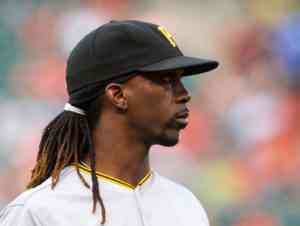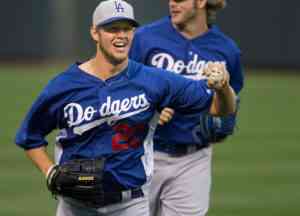Dear Rotoman:
I have played in a head to head league on CBS sports for the past five years. The first year, I followed fantasy advice and skewed heavily towards hitters rather than pitchers. I got destroyed that year.
 In this league, pitchers go first and often. By the time I started drafting pitchers I was left with Mat Latos, Kyle Lohse, and downwards from there. The best teams in the league had 12 starts for their pitchers each week because they had so many pitchers, while I had 5-8 starts.
In this league, pitchers go first and often. By the time I started drafting pitchers I was left with Mat Latos, Kyle Lohse, and downwards from there. The best teams in the league had 12 starts for their pitchers each week because they had so many pitchers, while I had 5-8 starts.
Since then, I have sought the best bat available in the 1st round, two aces in rounds 2-3, and a decent player with position scarcity in round 4. In the next 18 rounds, I target middling pitching, youth (ages 25-32) and OBP. I don’t draft relievers until late and usually punt 2nd base and catcher.
Any ideas how I can improve my draft philosophy this year?
“Trying To Get Head 2 Head”
Dear Trying:
I guess after taking the standard fantasy advice, things didn’t go much better the next four years. Am I right? So you’re back.
I will not give you standard head 2 head advice, because you didn’t tell me your scoring system, so I can’t get to much into that. But I do have some suggestions I’m sure are worth taking a look at.
Take A Look At History: If the team that wins every year takes an ace starter early, and teams that don’t take an ace starter struggle, it’s probably worth giving the winning way a try. Not only will you end up with a better pitcher than usual, but your opponents will end up with lower-ranked pitchers in their later slots.
Take A Look At Categories: Different providers have different point values for different stats, so it is dangerous to get too specific about values from provider to provider. But CBSsports has a good stat download service, allowing you to download last year’s stats (I think) and definitely this year’s projections. You can then multiply the category values by the player’s stats or projections in a spreadsheet, add them up, and see which players have real value across the season. One reason starting pitching often has a extra value is because points are given for a Win and a Quality Start and Strikeouts. That makes an ace on a good team a huge contributor when he pitches. Closers usually get a nice bump for a Save, too, though you can often find guys who get saves in the later rounds.
Take The Best Player Available: In auction leagues, you can concoct different strategies for your team by deciding how to budget your money, but in a draft league you want to focus on the best available player with each pick. Early on this is easy, the only questions will be whether you should take players at the less hitting-rich positions ahead of similarly rated guys at 1B and the OF. The answer is almost always yes, but you should always be looking at your next two picks, trying to find the best available talent for those two spots combined. I’m not sure how you’re dumping 3B and C, but my guess is that at some point you’d be better off taking better guys at those positions and scrambling at the end for your last outfielder.
Take Fun Guys Late: The last few rounds are the time to look for high upside risky players. There will always be boring productive guys on your waiver wire, so use those last spots to take erratic starters with high strikeout rates, and the home run hitting prospect who may not be called up until June, or the overall bum who has amazing splits against lefties or righties (or maybe at home versus the road). These types will vary depending on the size of your league and how aggressively owners chase this sort of talent. Just remember that you don’t have to be the most aggressive to score big here, if you study up before your draft.
The bottom line is that you’re going to win if your accumulate the most talent, so the only trick is knowing who has the most talent so that you make the best pick each time your turn comes. Good luck.




